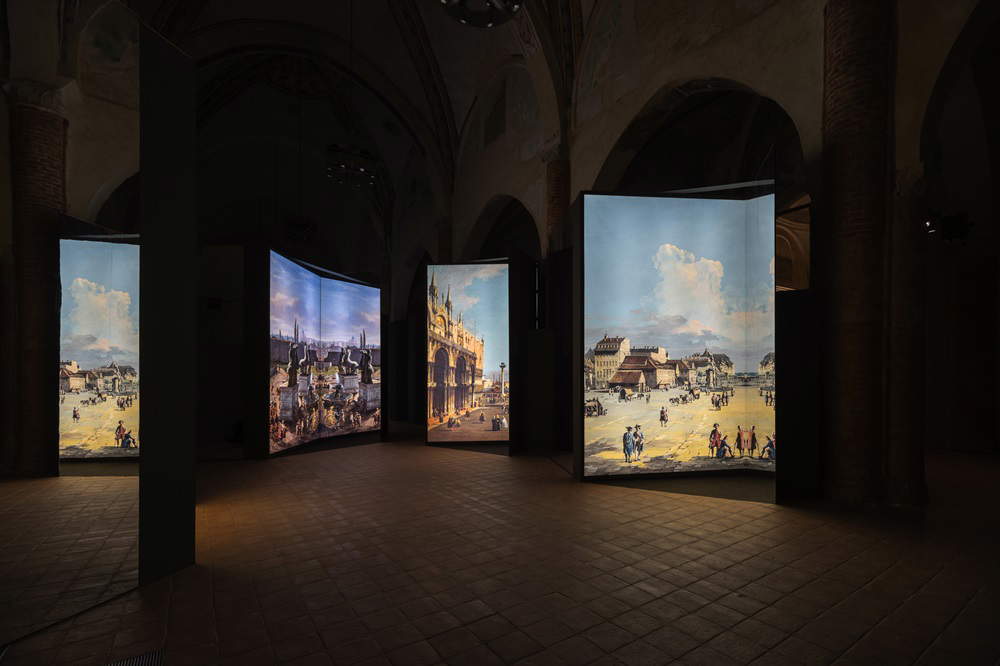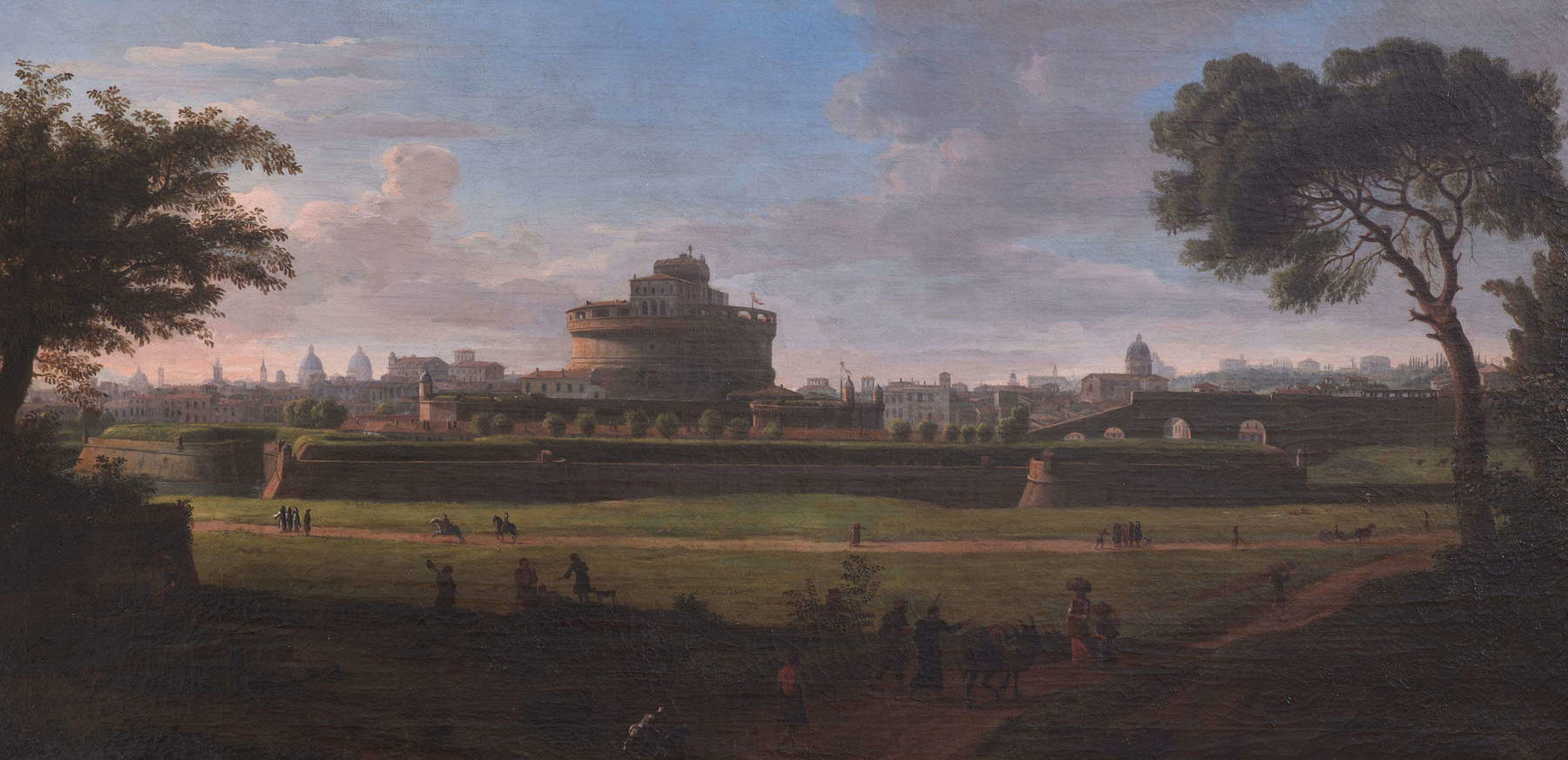Canaletto, Van Wittel and Bellotto: masterpieces of vedutismo on display in Cuneo
From November 30, 2024 to March 30, 2025, the Complesso Monumentale di San Francesco in Cuneo will host an exhibition dedicated to 18th-century vedutismo: it’s Canaletto, Van Wittel, Bellotto. The Grand Theater of Cities, organized by Fondazione CRC and Intesa Sanpaolo in collaboration with the National Galleries of Ancient Art and with the support of MondoMostre. Curated by Paola Nicita and Yuri Primarosa, the exhibition offers a journey into the urban views of the 18th century through twelve masterpieces from the National Galleries of Ancient Art in Rome.
The initiative reinforces the collaboration between Fondazione CRC and Intesa Sanpaolo, now in its third year, and which in previous years brought to Cuneo highly successful exhibitions such as The Colors of Faith in Venice and Lorenzo Lotto and Pellegrino Tibaldi, attracting more than 54,000 visitors. The exhibition is part of the National Galleries in the World project of the National Galleries of Ancient Art.
“On the track of the success recorded here in Cuneo in previous years,” says Gian Maria Gros-Pietro, chairman of Intesa Sanpaolo, “the exhibition presented today and realized together with Fondazione CRC, confirms how art, too, can contribute to consolidating Intesa Sanpaolo’s presence in the Cuneo area, one of its territories of choice, and thus further strengthen its ties with stable shareholders such as the Foundations.”
Mauro Gola, president of Fondazione CRC, comments, “The event hosted in the monumental complex of San Francesco”; says instead Mauro Gola, president of Fondazione CRC, “represents a unique opportunity to enrich the cultural offer of our community and promote beauty as a generative force, capable of attracting new audiences and affirming the role of the province of Cuneo as a nationally recognized center of cultural production. The new exhibition confirms the collaboration between the CRC Foundation and Intesa Sanpaolo, underscoring the harmony and communion of purpose between the two institutions, which are marked by a strong commitment to social, health and cultural issues and are particularly sensitive to the needs of the provincial territory.”
“We are happy to participate with an unprecedented loan in an exhibition project of the highest scientific value that presents a peculiar aspect of the National Galleries’ collections in an extraordinary territory,” comments Thomas Clement Salomon, director of the National Galleries of Ancient Art.



Vedutism as “Grand Theater of Cities”
The exhibition explores urban representation in the 18th century, a time when Rome and Venice were essential stops on the Grand Tour. The exhibition focuses on the works of Giovanni Antonio Canal known as Canaletto (Venice, 1697 - 1768), Gaspar van Wittel (Amersfoort, 1653 - Rome, 1736) and Bernardo Bellotto (Venice, 1722 - Warsaw, 1780), but also includes works by Giovanni Paolo Pannini (Piacenza, 1691 - Rome, 1765), whose talents transformed cities into open-air theaters.
From Venetian festivals to Roman celebrations, the works on display capture not only the architecture but also the vital soul of cities, with a precision that mixes realism and poetry. Each painting tells a piece of urban history, immortalizing a unique and unrepeatable moment.






The works on display: Rome and Venice as protagonists
The exhibition opens with five views by Gaspar van Wittel, the Dutch artist who took Vedutism to the highest degree of perspective rigor thanks to his scientific training, producing large bird’s-eye architectural compositions animated by moving figures and invaded by a vital atmosphere. Among the works on display are Veduta di Roma dalla piazza del Quirinale (1684) and Veduta del Tevere a Castel Sant’Angelo (1683), which combine the precision of technique with the animation of urban life. Also on view is the painting The Borromean Islands (c. 1686-1690), which was commissioned from the artist by the Borromeo family, and to create it the artist stayed for some time on Lake Maggiore.
This is followed by a tribute to Giovanni Paolo Pannini, master of architectural capriccio. His views, such as Capriccio with the equestrian statue of Marcus Aurelius (1745) and Ruderi con terme (1730), mix real and imaginary elements, transporting the viewer to a universe where ruins dialogue with the present and from which a sense of nostalgia for classicism shines through.
Canaletto’s Venetian views represent another focal point. With works such as Veduta di Venezia con Piazza San Marco e le Procuratie (1735-40) and Veduta di Venezia con la piazzetta (c. 1741), the artist captures the luminous beauty of Venice, blending architectural details and atmospheric vitality in compositions of extraordinary clarity.
The exhibition closes with Bernardo Bellotto, heir and grandson of Canaletto, who was able to reinterpret vedutismo with a cooler color palette and a melancholy approach. His Market Square in the New Town of Dresden (c. 1747) testifies to his personal style, in which European cities emerge as living, complex and poetic places.






A cultural and sustainable experience
The exhibition is not only an opportunity to admire great masterpieces, but also a project that focuses on sustainability. The displays reuse existing structures to reduce environmental impact, while the headsets for guided tours are designed to be reusable.
To make the exhibition accessible to all, admission is free and guided tours are available every weekend, audioguides in Italian and English, as well as dedicated routes for children. Laboratories and workshops for schools of all levels enrich the educational offerings, creating a bridge between art and education.
Accompanying the exhibition is a catalog edited by Paola Nicita and Yuri Primarosa, enriched by contributions from young scholars participating in the “Museo Laboratorio” project of the National Galleries of Ancient Art. This educational initiative, in collaboration with La Sapienza University of Rome, allows students to explore aspects related to conservation and art history.
During the four-month opening, the San Francesco Monumental Complex will host side events, thematic tours and family activities, further enriching the public’s experience.
 |
| Canaletto, Van Wittel and Bellotto: masterpieces of vedutismo on display in Cuneo |
Warning: the translation into English of the original Italian article was created using automatic tools. We undertake to review all articles, but we do not guarantee the total absence of inaccuracies in the translation due to the program. You can find the original by clicking on the ITA button. If you find any mistake,please contact us.





























